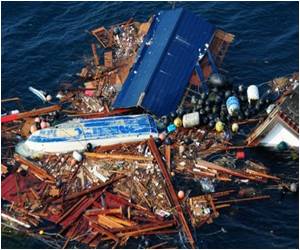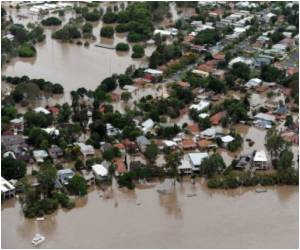Results from study could lend a hand to fishery and wildlife managers keep an eye on their stocks before disaster strikes.

“This is thought to underlie lots of sudden transitions — in populations, ecosystems or climate regime shifts,” says Jeff Gore, an assistant professor of physics at MIT.
Gore and his students have now offered the first experimental validation of this theory. They showed that in populations of yeast subject to increasingly stressful conditions, populations became less and less resilient to new disturbances until they reached a tipping point at which any small disruption could wipe out a population.
“In the wild, you do see things change suddenly, and this model is a reasonable explanation, but it’s very hard to prove that this is happening,” Gore says. “This is the kind of thing we can do in the laboratory that you can’t do in the wild.”
The findings, published in the June 1 issue of Science, could help fishery and wildlife managers identify warning signs so interventions can be made before total collapse occurs. Lead authors of the paper are MIT graduate student Lei Dai and visiting student Daan Vorselen. Pappalardo Postdoctoral Fellow Kirill Korolev is also an author.
Stress response
Advertisement
This phenomenon, known as the “strong Allee effect,” occurs whenever members of a population profit from having other individuals nearby. For example, fish benefit from traveling in a school, which offers protection from predators. The theoretical model tested in this paper should hold true for any population that shows a strong Allee effect.
Advertisement
The researchers found that as conditions decline, the population becomes less resilient. Whenever it suffers any kind of perturbation, the population is more prone to extinction, requiring more time to recover to a stable population size.
In this case, the disturbance was a salt shock, which disrupts many cellular functions in yeast and can lead to death. Populations that were closer to the tipping point collapsed, while those living in better environmental conditions were able to bounce back. “In the more challenging environments, the populations are not as robust,” Gore says. “Moreover, it is often difficult to predict an upcoming collapse by simply monitoring the decrease in population size.”
But there is cause for some optimism: The researchers found that the fluctuations in yeast population became larger and slower near the tipping point. Thus, an increase in size and timescale of fluctuations may serve as indicators of how fragile a population is and provide advance warning of its impending collapse.
Stephen Carpenter, a professor of zoology at the University of Wisconsin at Madison, says the new study’s biggest contribution is that the researchers were able to both map the location of the tipping point, or threshold, and measure the early warning signs that predict it.
“Many systems are so complicated that you can’t really measure resilience,” he says. “You might be pretty sure that there’s a threshold, and you can move from one side to the other, but you don’t know exactly where the threshold is.”
In the wild
While this phenomenon is easier to observe in a laboratory than in wild populations, the researchers believe that the warning signs they have identified — most importantly, the loss of resilience as the tipping point is approached — could help wildlife and fishery managers monitor their populations.
This could be achieved by measuring population levels and comparing them with the fluctuations predicted by the researchers’ model. The team is also studying the spatial patterns of populations as they decline, in hopes of identifying warning signs that might be easier to monitor than population fluctuations.
The researchers are also looking at more complex systems to see if they can find the same effect.
“This is the simplest case you could possibly imagine — a single species in a test tube. We’re interested in trying to start adding a second species, or at least a second strain ... to see if the same dynamics will be there,” Gore says.
Source-MIT News











